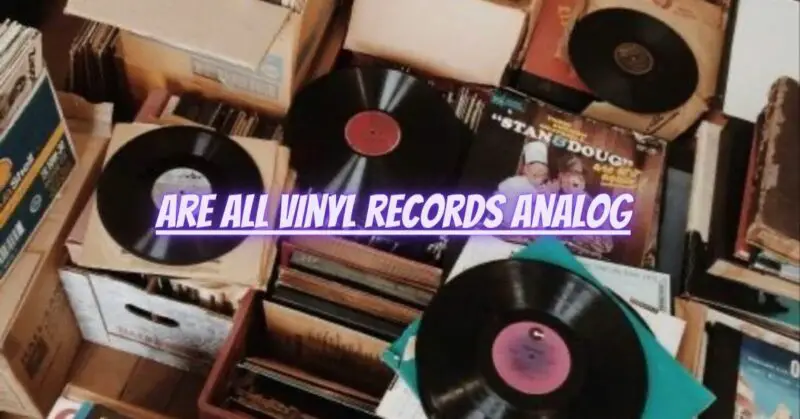Vinyl records have long been celebrated for their warm and rich sound, but there is some confusion surrounding the term “analog” when referring to vinyl records. In this article, we will explore the different types of vinyl records and clarify whether they are all analog.
- Analog vs. Digital: To understand the distinction, it is important to differentiate between analog and digital formats. Analog refers to a continuous representation of sound waves, while digital uses discrete numerical values to represent sound. Vinyl records are inherently analog because they capture and reproduce sound through physical grooves and a mechanical playback process.
- Standard Vinyl Records: The majority of vinyl records in circulation are indeed analog. Standard vinyl records, also known as LPs (long-playing records), are pressed from master recordings that are analog in nature. The music is recorded onto analog tapes, and the cutting process transfers the audio signal directly onto the vinyl disc, preserving the analog nature of the music.
- Digital Vinyl Records: While vinyl records are primarily analog, there are instances where digital audio is used in the vinyl production process. Some vinyl records are created from digital sources, where the original music is recorded, mixed, and mastered in a digital format. The digital audio is then converted to an analog signal and cut onto the vinyl disc. These records are often referred to as “digital vinyl” or “vinyl sourced from digital.”
- Reissues and Remastered Albums: With the resurgence of vinyl, many reissues and remastered albums are released on vinyl format. These can include recordings that were originally captured and mastered in analog, but also those that have been digitally remastered from original analog tapes. The vinyl pressings of these albums maintain their analog nature, despite the digital elements involved in the remastering process.
- Direct-to-Disc Recordings: In some cases, recordings are made directly onto vinyl records in a single continuous take, bypassing any digital or analog tape intermediary. These direct-to-disc recordings capture the music in real-time, ensuring a completely analog experience.
Conclusion: The majority of vinyl records are analog in nature, as they are created through a process that involves analog tapes and mechanical playback. However, there are instances where digital audio is involved in the vinyl production process, such as records sourced from digital recordings or remastered albums. Regardless of the source, vinyl records continue to offer a unique listening experience and hold a special place in the hearts of music enthusiasts who appreciate the warm and authentic sound they provide.

